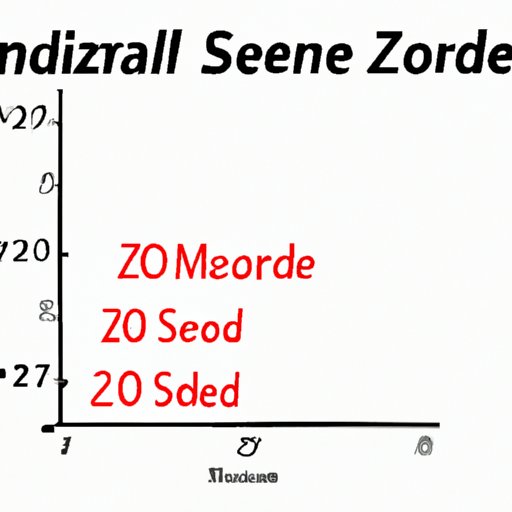
I. Introduction
When it comes to statistics, the z score is a crucial concept to understand. It helps us determine the significance of a particular data point and how it relates to the rest of the data set. In this article, we’ll explore what the z score is, why it’s important, and how to calculate it. We’ll also look at real-world applications of the z score and provide practice problems to help you master this concept.
II. Step-by-Step Guide to Finding the Z Score
The z score is a measure of how many standard deviations a data point is from the mean of the data set. The formula for the z score is:
z = (x – μ) / σ
Where x is the data point, μ is the mean of the data set, and σ is the standard deviation of the data set. To find the z score of a particular data point, follow these steps:
- Subtract the mean from the data point: x – μ
- Divide the result by the standard deviation: (x – μ) / σ
Let’s say the mean of a data set is 50 and the standard deviation is 10. If a data point is 70, the z score would be:
z = (70 – 50) / 10 = 2
This means that the data point is two standard deviations away from the mean of the data set.
III. Understanding Standard Deviation and Normal Distributions
Standard deviation is a measure of the spread of a data set. It tells us how much the individual data points differ from the mean of the data set. A smaller standard deviation means that the data points are closer to the mean, while a larger standard deviation means that the data points are more spread out.
A normal distribution, also known as a Gaussian distribution, is a probability distribution that follows a bell curve shape. A normal distribution is characterized by its mean and standard deviation. In a normal distribution, approximately 68% of the data falls within one standard deviation of the mean, 95% falls within two standard deviations, and 99.7% falls within three standard deviations.
The z score is important in normal distributions because it allows us to calculate the probabilities of certain events occurring based on their distance from the mean.
IV. Calculating Percentiles using Z-Scores
Percentiles are a way of representing where a particular data point falls within a data set. If a data point is in the 80th percentile, for example, it means that 80% of the data in the set falls below that point. To calculate percentiles using z scores, follow these steps:
- Convert the percentile to a z score using a z-score table. For example, if you want to find the z score corresponding to the 80th percentile, you would look up the value 0.80 in the z-score table, which would give you a z score of 0.84.
- Use the formula for the z score to find the corresponding data point. For example, if the mean of the data set is 50 and the standard deviation is 10, you would calculate the data point using:
x = (z * σ) + μ
x = (0.84 * 10) + 50
x = 58.4
This means that the data point corresponding to the 80th percentile is 58.4.
V. Z Score Tables
A z-score table, also known as a standard normal distribution table, is a table that shows the probabilities for a standard normal distribution. The table is usually organized by z score in one column and probability in another.
To use a z-score table, follow these steps:
- Determine the z score of the data point you want to calculate the probability for.
- Find the corresponding row and column in the z-score table.
- The entry in the table is the probability of getting a z score as extreme as the one you’re interested in.
VI. Real-World Applications of Z-Scores
Z scores have many real-world applications in fields such as finance, sports, and medicine. In finance, z scores are used to evaluate the creditworthiness of a company. In sports, z scores are used to compare the performance of athletes across different events and seasons. In medicine, z scores are used to assess the growth and development of children and to diagnose obesity.
By understanding z scores, individuals in these fields can make more informed decisions and analyze data more accurately.
VII. Z Scores vs. T Scores
T scores are similar to z scores in that they measure the number of standard deviations a data point is from the mean. However, t scores are used when the standard deviation of the population is not known and must be estimated from the sample size.
T scores are typically used in smaller samples or when the population standard deviation is unknown. Z scores are used when the population standard deviation is known or when the sample size is very large.
VIII. Practice Problems and Exercises
Practice Problem 1: Find the z score corresponding to a data point of 60 in a data set with a mean of 50 and a standard deviation of 5.
Solution: z = (60 – 50) / 5 = 2
Practice Problem 2: Find the data point corresponding to the 25th percentile in a data set with a mean of 60 and a standard deviation of 8.
Solution: z = -0.67, x = (z * σ) + μ = (-0.67 * 8) + 60 = 54.36
IX. Conclusion
The z score is a powerful tool in statistics and has many real-world applications. By understanding how to calculate the z score and interpret its meaning, you can make more informed decisions and analyze data more accurately. Remember to practice the concepts covered in this article to reinforce your understanding and apply them to real-world problems.




